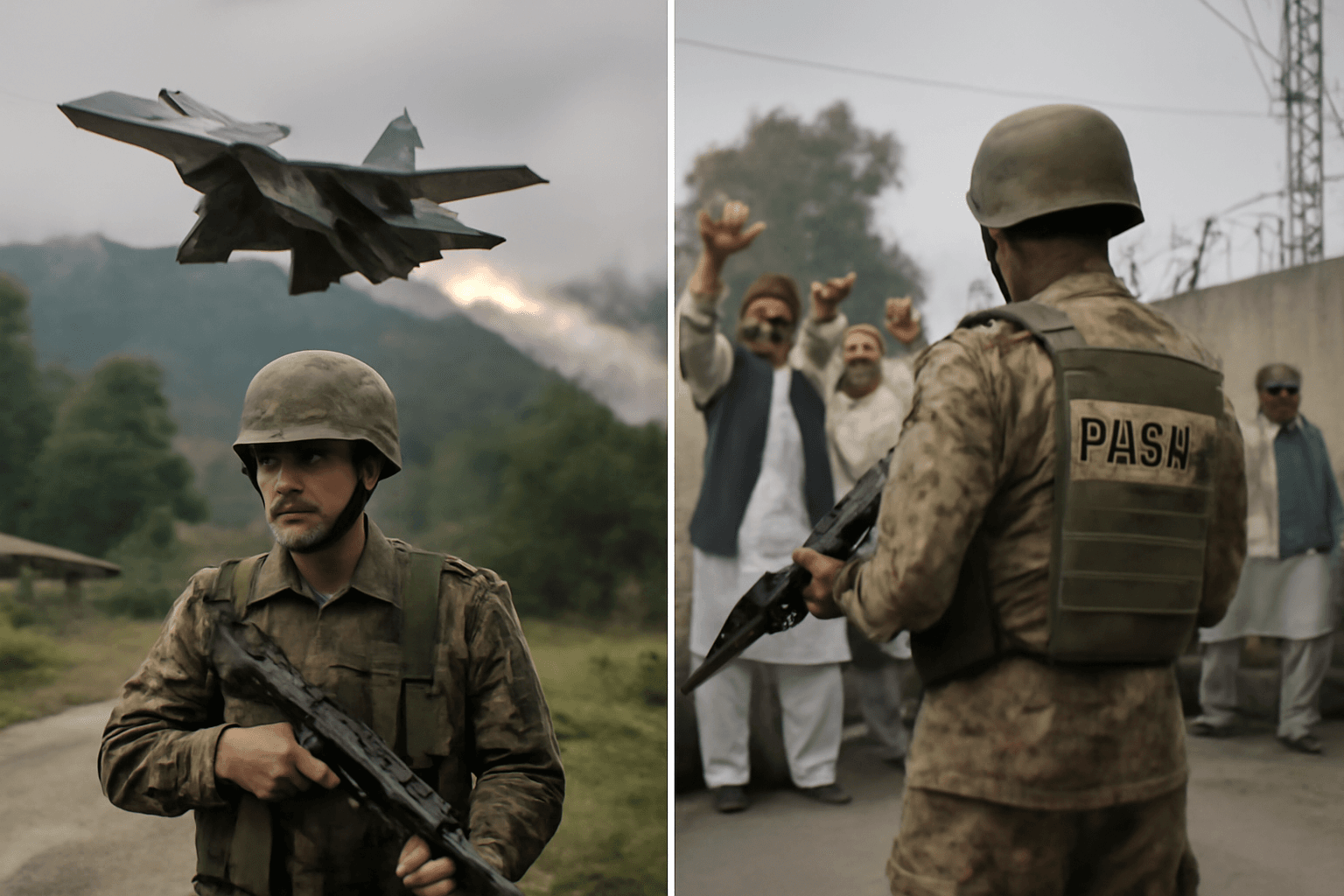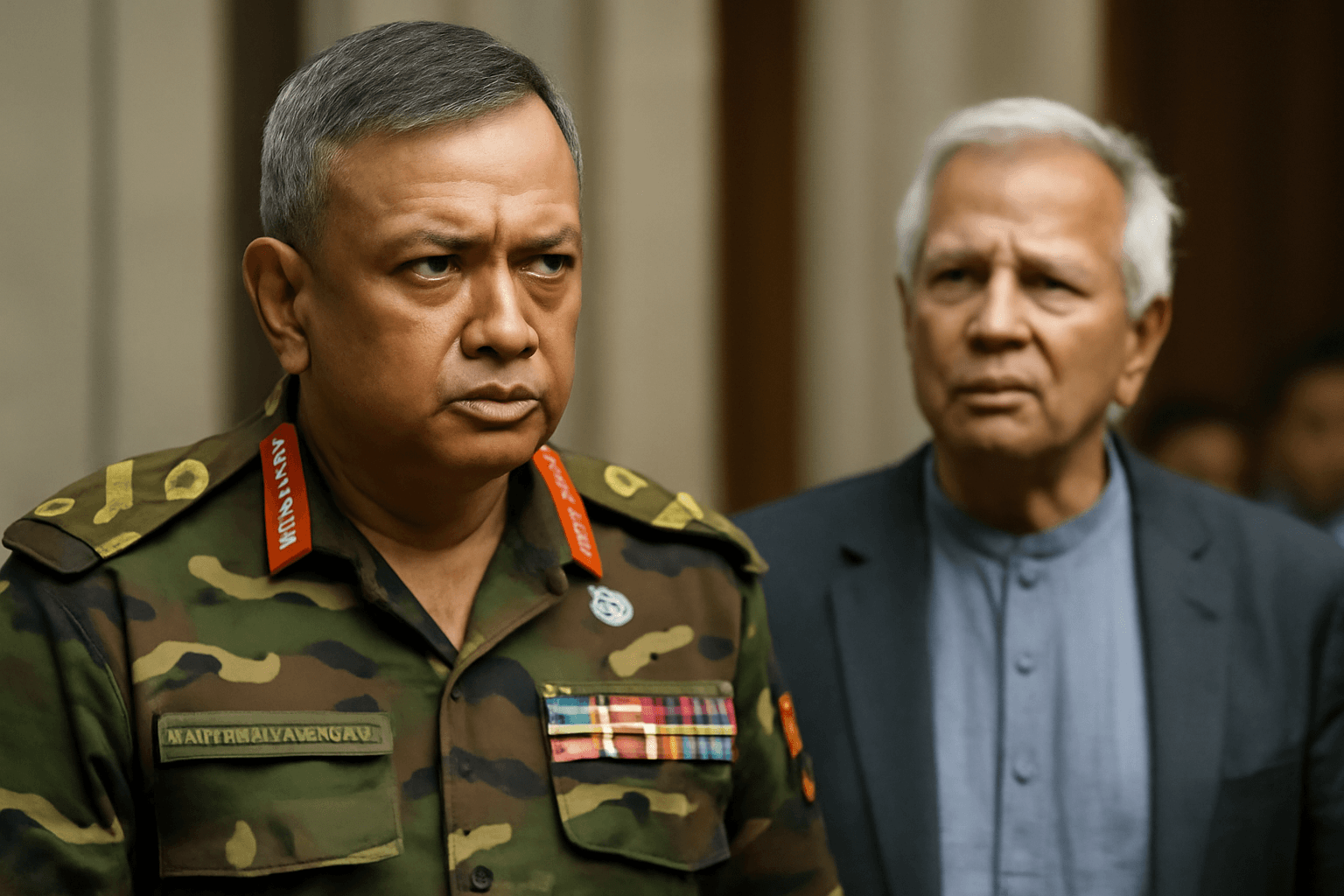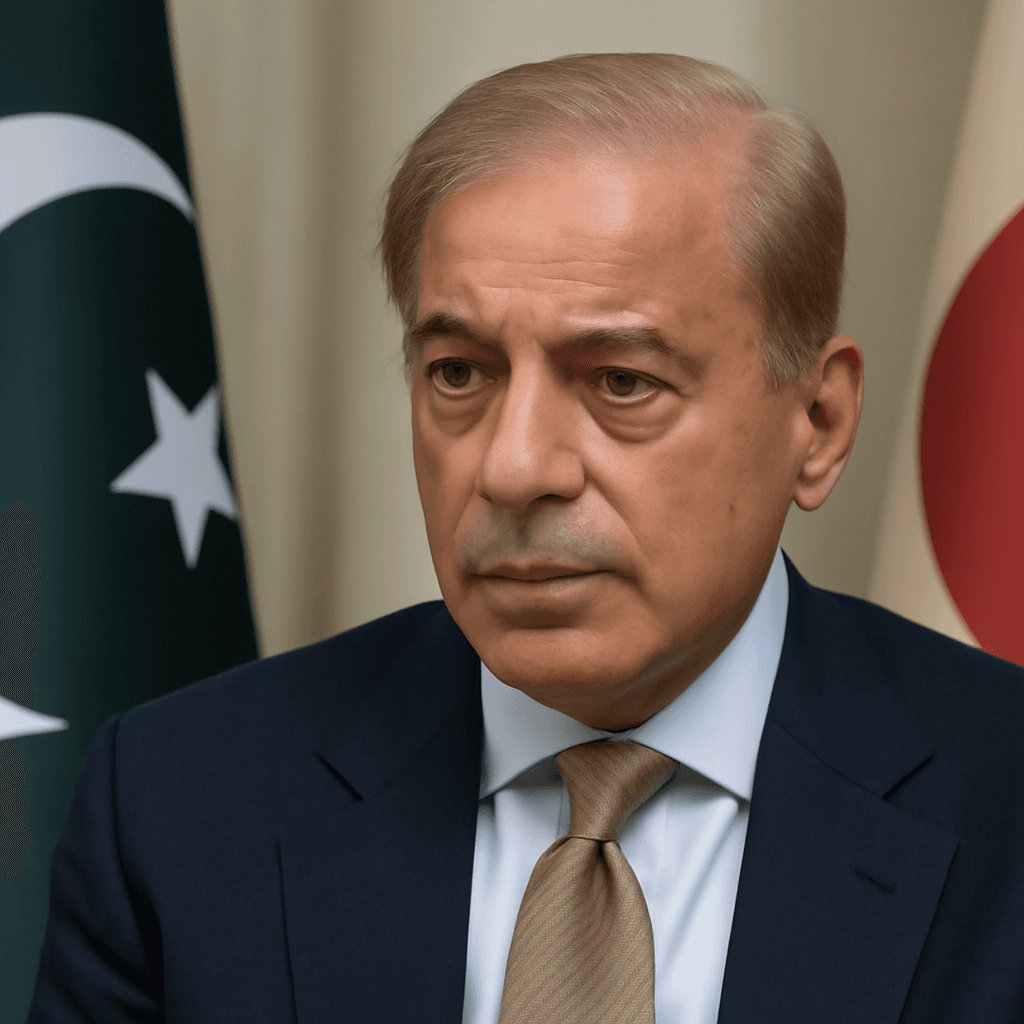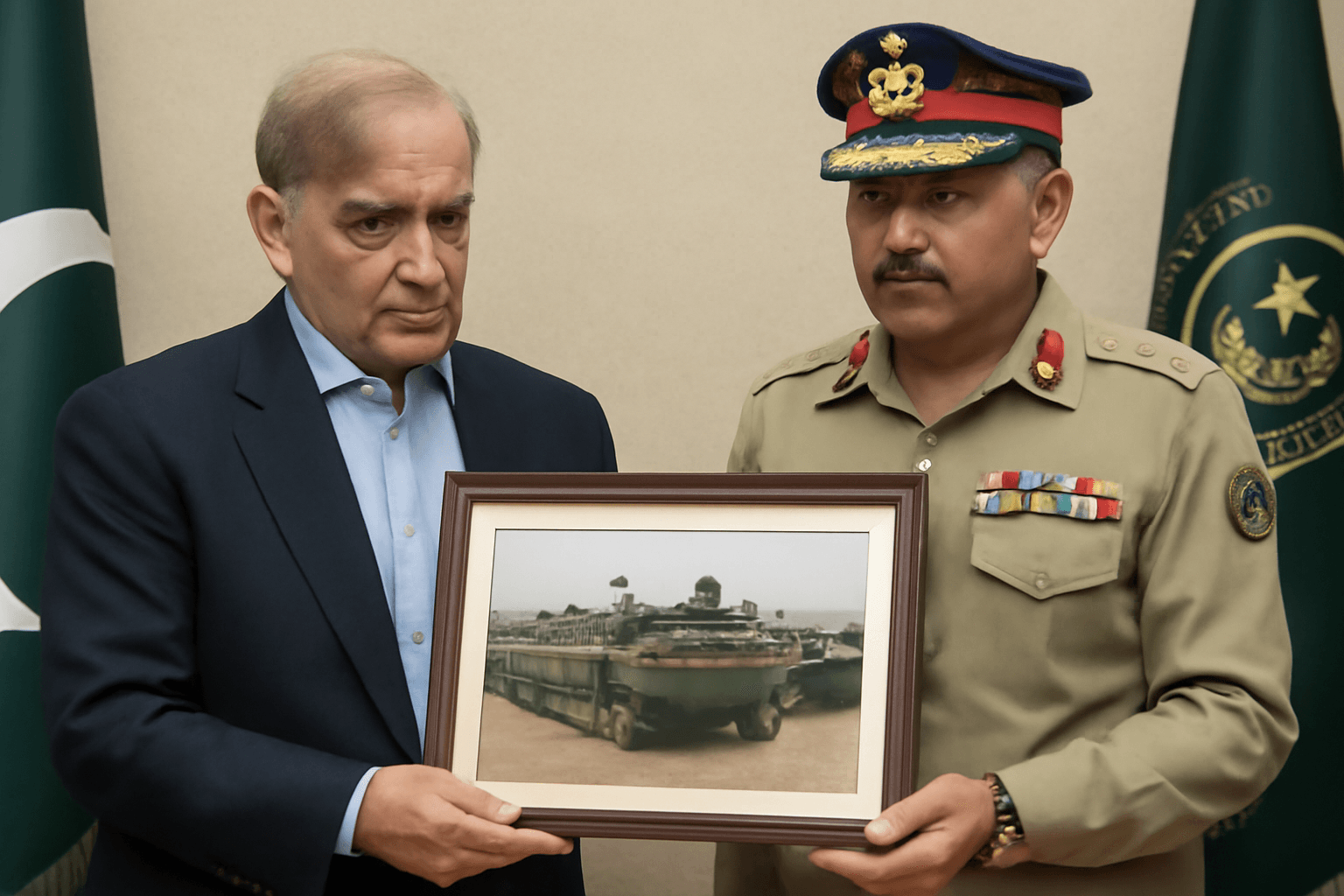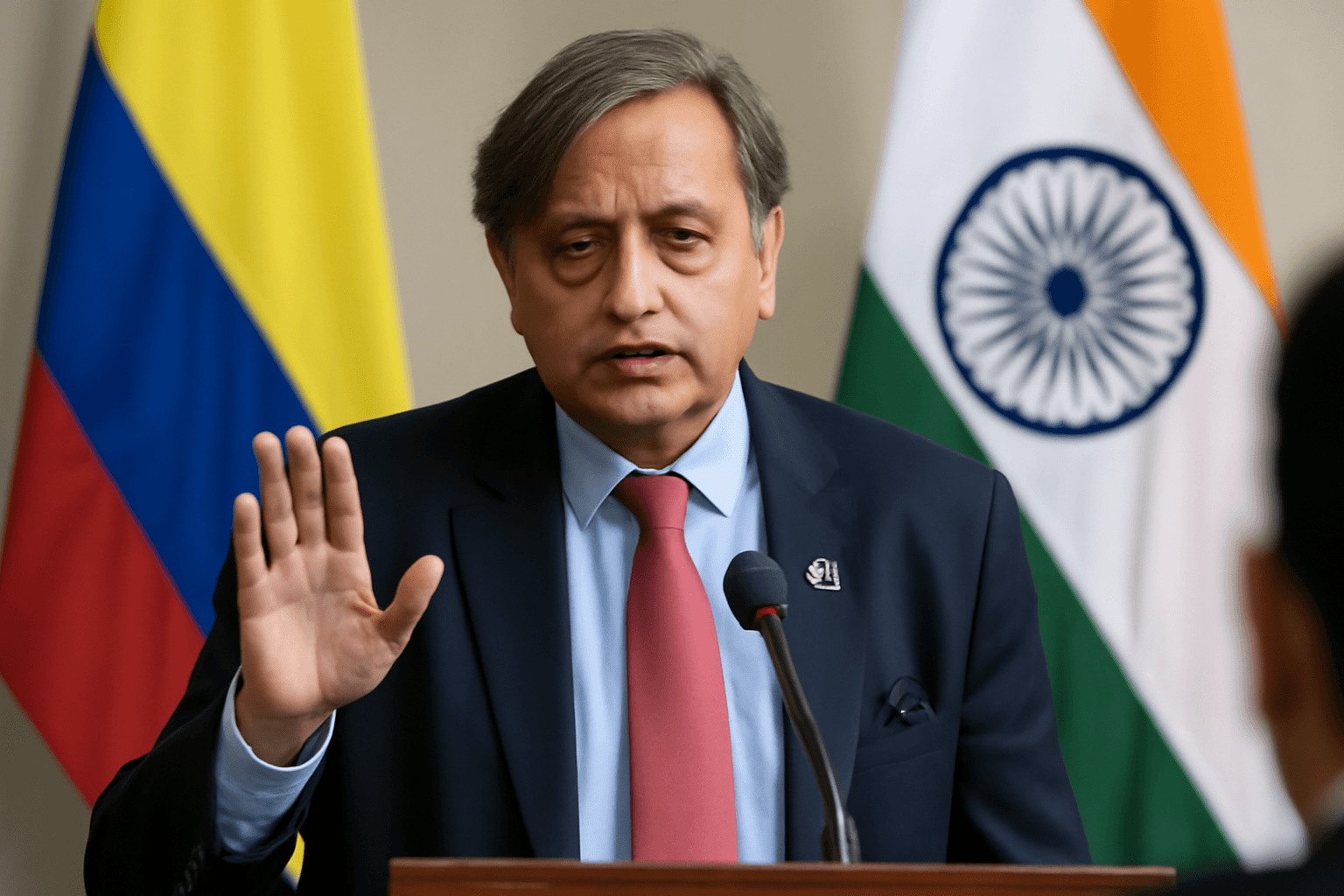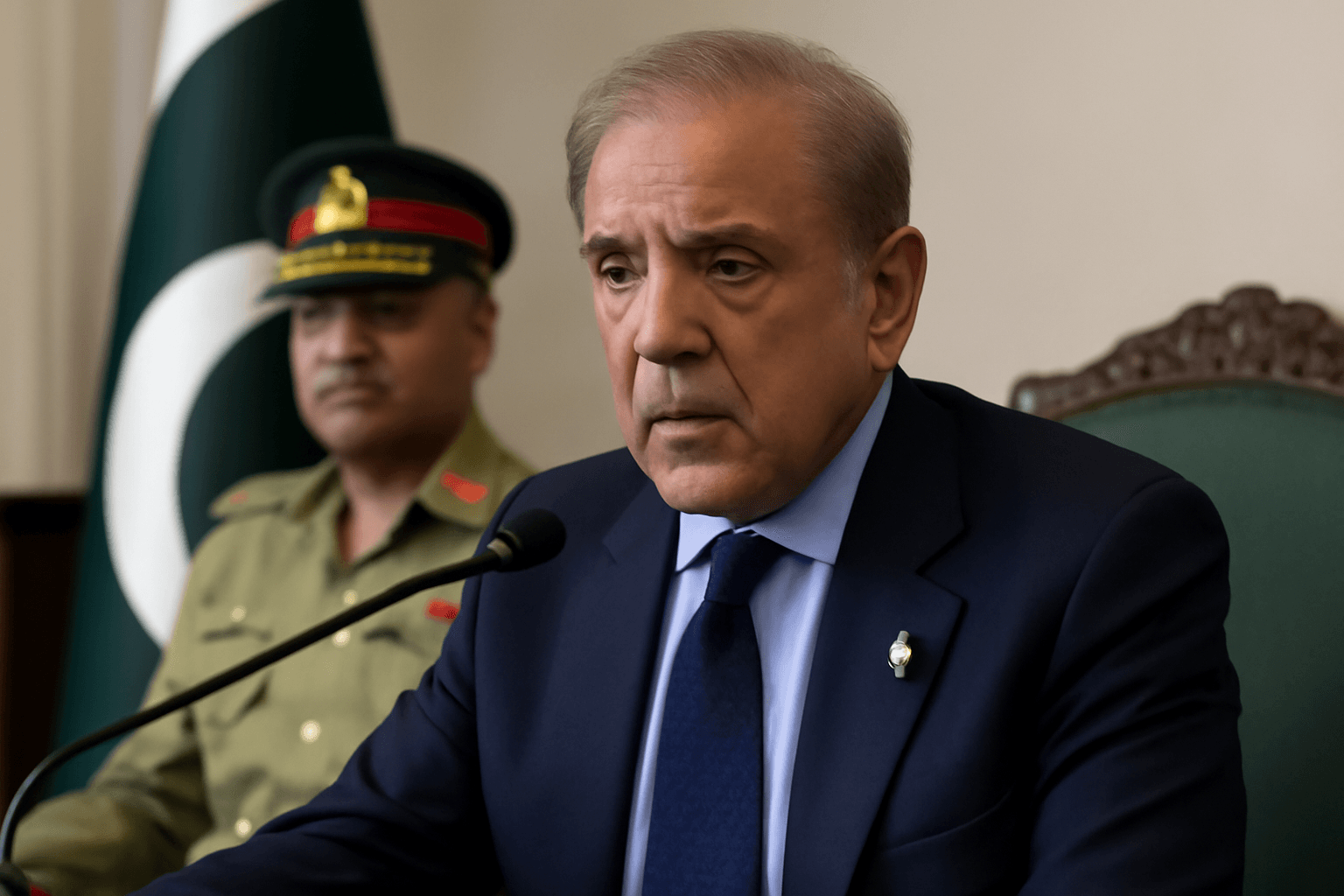In a striking incident that has garnered widespread attention, Pakistan's Prime Minister Shehbaz Sharif recently presented Army Chief General Asim Munir with a framed photograph intended to symbolize the country's military operation, dubbed "Bunyan-ul-Marsoos." However, the image in question is not a representation of any Pakistani achievement; rather, it depicts a Chinese rocket artillery drill from 2019. This unusual gesture occurred against the backdrop of India's execution of Operation Sindoor, a precise retaliatory measure aimed at dismantling terrorist infrastructure in Pakistan following a deadly attack in Pahalgam.
The presentation of the photograph has been met with humor and disbelief, described by critics as a poor attempt at military showmanship. A BJP leader remarked, "When your victories require stock images from Beijing, it’s not strategy; it’s a national embarrassment." Social media commentators echoed these sentiments, pointing out the absurdity of showcasing a foreign military exercise under the guise of a national operation.
India's Operation Sindoor, launched on May 7 following a brutal attack on tourists, marked a significant escalation in military response to cross-border terrorism. This operation was characterized by its precision and effectiveness, utilizing advanced weaponry such as air-launched cruise missiles and drones to strike multiple high-value terrorist locations within Pakistan, including Muridke and Bahawalpur, known hubs for groups like Lashkar-e-Taiba and Jaish-e-Mohammed.
Unlike previous actions, such as surgical strikes and airstrikes that emphasized symbolic deterrence, Operation Sindoor aimed to impose tangible consequences, diminishing the operational capacity of Pakistan-backed terror organizations. By executing precise strikes on their strongholds, India sent a clear message that no territory remains beyond its reach, compelling terrorist leaders to operate under increasingly precarious conditions.








